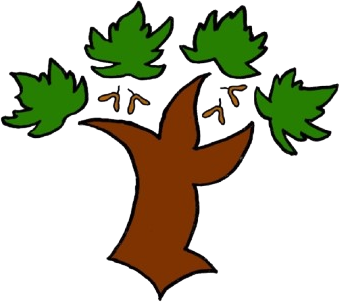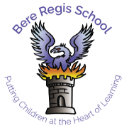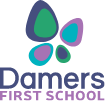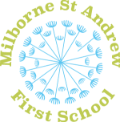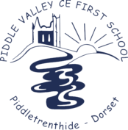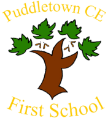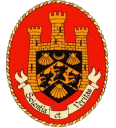
Art and Design
Art and design
At Puddletown First School our art and design projects are well sequenced to provide a coherent subject scheme that develops children’s skills and knowledge of visual elements, art forms, artists and art movements.
Intent:
At Puddletown First School we want every child to be happy and enthusiastic learners of Art and Design and to be eager to achieve their very best in order to fulfil their talents. We value Art and Design as an important part of a child’s entitlement to a broad and balanced curriculum. It is our vision that Art and Design provides the children with the opportunities to develop and extend their skills whilst expressing their individual interests, thoughts and ideas. We aim to provide an Art and Design curriculum that pupils from Reception to Year 4 not only enjoy but also helps them master a wide range of skills and techniques whilst using a variety of materials. As they progress, we will also provide pupils with the opportunity to critically evaluate and analyse artwork, form opinions and encourage them to use artistic vocabulary in discussions.
Implement:
The teaching and learning of Art and Design at Puddletown First School is based on the National Curriculum and is supported by Cornerstones. To ensure high standards of teaching and learning in art and design, we implement a skills curriculum that is progressive throughout the whole school. We believe in a deeper level of learning at Puddletown First, so our art projects are placed alongside other subject projects where there are opportunities for making meaningful connections. The skills progression document ensures the curriculum is covered and the skills taught are built on from year group to year group. The emphasis on knowledge ensures that children understand the context of the artwork, as well as the artists, architects and designers that they are learning about and being inspired by. A focus on skills also means that children are given opportunities to express their creative imagination, as well as practice and develop mastery in the key processes of art: drawing, painting, printing, collage and sculpture.
EYFS:
Pupils explore and use a variety of media and materials through a combination of child initiated and adult directed activities. They have opportunities to learn to:
• Explore the textures, movement, feel and look of different media and materials
• Respond to a range of media and materials, develop their understanding of them in order to manipulate and create different effects
• Use different media and materials to express their own ideas
• Explore colour and use for a particular purpose
• Develop skills to use simple tools and techniques competently and appropriately
Key Stage 1
In Key Stage 1, each autumn term begins with essential skills and knowledge projects (Mixing Colours in Year 1 and Exploring Colours in Year 2). Teaching these projects enables children to be introduced to and then revisit colour mixing and the colour wheel with plentiful opportunities for the children to explore primary and secondary colours and hues.
In Year 1, children explore themes directly related to the children themselves, such as their facial features, the surrounding natural world and their local community. In Year 2, the projects expand children’s artistic horizons to study a more comprehensive range of artists, artistic movements and creative techniques.
Lower Key Stage 2
In Lower Key Stage 2, each autumn term begins with essential skills and knowledge projects (Colour Theory in Year 3 and Warm and Cool Colours in Year 4). Teaching these projects enables children to build on their previous understanding of colour and further develop their expertise by studying tertiary, analogous and complementary colours with many opportunities for the children to explore warm and cool colours.
In Year 3, children expand their experiences to study a broader range of art forms, artists and genres. They also begin to study art from specific and diverse periods of history, including prehistoric pottery and Roman mosaics. Other genres studied in Year 3 build on previous techniques learned in Key Stage 1 and include more complex techniques in printmaking, drawing, painting and textiles.
In Year 4, children develop more specialised techniques in drawing, painting, printmaking and sculpture. They explore ways in which ancient cultures have influenced art and crafts by studying, for example, mediaeval weaving techniques and the religious significance of Islamic art.
Seasons are also a consideration for the placement of art and design projects, to allow children the opportunity to work in other learning spaces around our school grounds. For example, if children are required to work outdoors, these projects have been placed in either the latter part of the spring or summer term, to best experience and draw inspiration from what is around them. Where possible, projects with similar materials are spaced out to have as little strain on resources as possible. For example, in Key Stage 1, clay work is taught in different terms.
Impact:
By the end of each year, children should have gained practical knowledge (knowledge of the methods that artists, craft makers and designers use), theoretical knowledge (knowledge of artists and artworks) and disciplinary knowledge (knowledge about how art is studied and discussed).
Each child has their own sketchbook so they can see their own progression of skills throughout the year. Summative assessment is conducted termly by class teachers across each year group and is aimed at targeting next steps in learning as well as informing the subject leader of progress and skills/knowledge still to be embedded.
Art and Design is also monitored by the subject leader throughout the year in the form of collection of evidence (photos), book monitoring, looking at outcomes measured against age-based progression and pupil interviews to discuss their learning. This tangible evidence aids understanding and establishes the impact of the teaching taking place.
The creativity of all our pupils is celebrated through communal displays and published on our website. By the end of Year 4 we expect our pupils to have:
- A passion for being creative and using their imagination to express themselves.
- The confidence to articulately reflect, review and evaluate their work and that of others.
- A desire to embrace expressive art as a way to reflect, comment on and visually respond to emotive issues.
- A sense of pride in the art they are creating.
